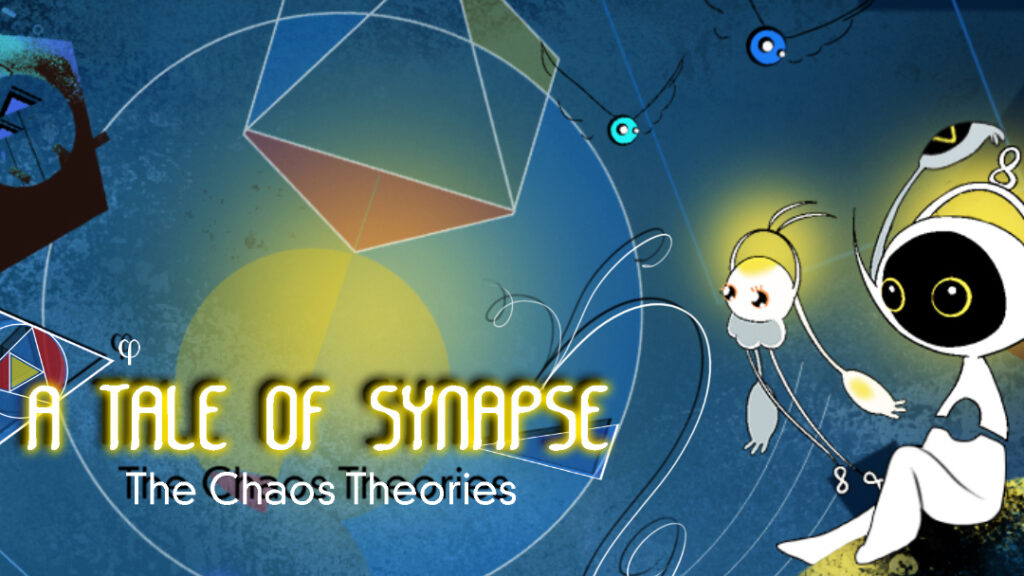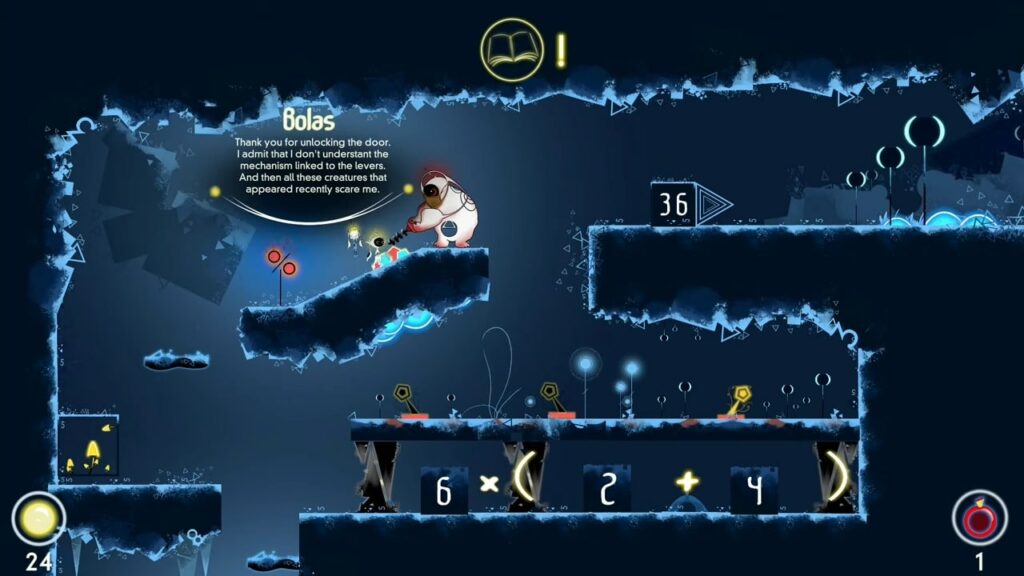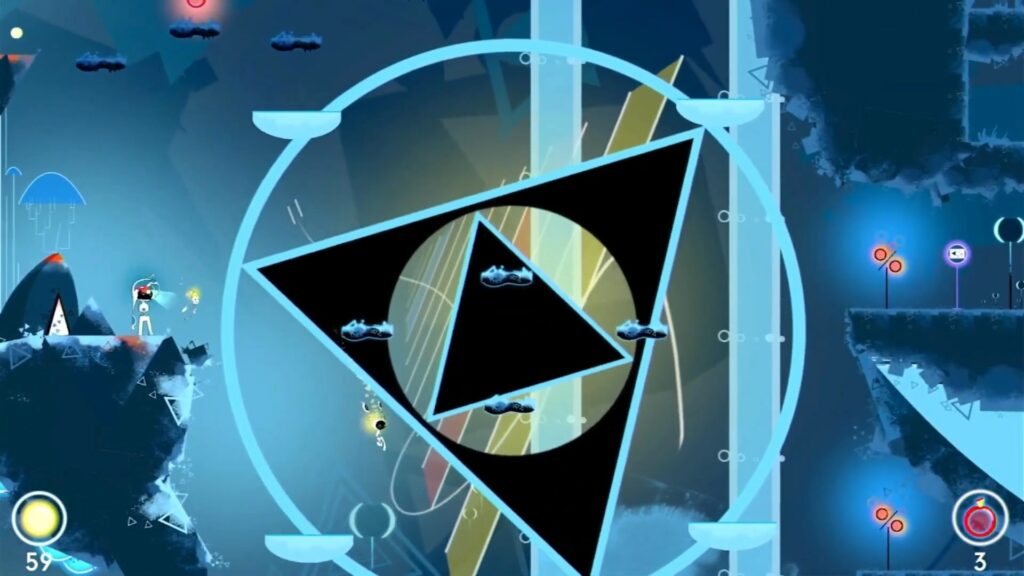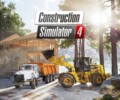
Developer: Souris-Lab
Publisher: Tesura Games
Platform: Switch, PC
Tested on: Switch
A Tale of Snyapse: The Chaos Theories – Review
With puzzle platformer A Tale of Synapse: The Chaos Theories (hereafter referred to as simply Synapse), developer Souris-Lab is taking a plunge into the much scrutinized genre of educational video games. Synapse is a game that requires logical thinking and mathematical skills to complete. Before you dismiss the game based on it being an edutainment product, however, we should point out that there appears to be more to Synapse than meets the eye, offering a more fleshed out narrative than most math games. Read on to find out whether Synapse is worth dusting off your mathematical skills for.
Story
In Synapse’s story, which is structured somewhat like a fairy tale, we meet Néro, a humanoid creature that belongs to a race called the Synapsians, who inhabit Hemeide. Unlike most other Synapsians, Néro loves learning about new things, so it shouldn’t come as a surprise that the library becomes Néro’s second home. This is where Néro befriends the librarian, who becomes a father figure to the intrepid adventurer. While cleaning the library’s basement, however, things go awry and Néro ends up stranded underground. Here, Néro befriends Sci, another creature. Together, the pair must make it out of their predicament safely. Thankfully, the skills of Néro and Sci are complementary, and with the aid of Néro’s knowledge and Sci’s otherworldly abilities, our heroes should be able to return home safely. Right? If only it were that easy.
Synapse’s cutesy story is unfortunately undercut by a constant stream of spelling and grammar errors. Given that the game was developed by a French studio, there is a good chance that your mileage may vary when playing Synapse in another language, but the English language version is dragged down due to its poor translation. Since Synapse is an educational title, it’s strange that there wasn’t any quality control applied to this version of the story, as the English speaking audience is probably Synapse’s largest market. Hopefully a patch will fix this and bring the game’s story up to par with the the majority of what we’re getting here, but as you’ll find out, the language issues aren’t the only weak point here.
Graphics
Synapse’s visuals are easily one of the highlights of the game. The fairy tale-like backgrounds and cutesy character designs are appealing and there is a dream-like atmosphere draped over each of the game’s four distinct worlds. Backgrounds are littered with semi-hidden numbers and geometrical shapes, creating a world that feels logical and familiar, yet alien at the same time. The clean art style is minimalistic and not overly detailed, but it works wonderfully here. The game’s simplistic visuals ensure that performance is buttery smooth, although not everything is perfect here.
Apart from the aforementioned spelling and grammar problems, there is a visual issue with the game’s text as well. The speech bubbles for the characters remain the same size throughout dialogue scenes, regardless of the amount of text that needs to be displayed. This means that the lengthier chunks of text are nearly illegible because they are crammed in such a small space, and it can be really difficult to follow what is going on as a result. This is especially apparent in handheld mode, so we recommend playing the game on a TV instead.
Sound
An atmospheric piano soundtrack accompanies Néro and Sci on their adventure. The music never takes to the foreground and is fairly forgettable, but that’s not necessarily a bad thing, as having distracting music would make it harder to focus on the puzzles. There is some voice acting present here as well, but given the alien nature of the characters and creatures, voices are replaced with gibberish. The emotional impact of the dialogue is achieved through intonation rather than actual words, which is an impressive feat. The sound effects are decent as well.
Gameplay
We know that the idea of edutainment leaves a bad taste in the mouths of many gamers, so bear with us: Synapse actually is one of the better educational titles out there, because it doesn’t feel like an educational game. What you’re getting here is a fairly simple puzzle platformer where players must overcome obstacles by using math and physics. Players can either control Sci and Néro simultaneously or they can tackle the game’s challenges in co-op, where each player takes control of one of the two protagonists. Néro’s powers are grounded in reality while Sci’s abilities feel more otherworldly, as she can shift into another dimension, which allows her to see information that Néro can then use to solve various equations. New skills and upgrades for existing skills are gradually unlocked, making for a nice sense of progress.
The difficulty level of the puzzles seems to indicate that this is a title aimed at the 10 to 12-year-old crowd. Anyone older will find these ridiculously easy, whereas the younger crowd hasn’t learned the right way to solve some of them. It’s one of the more common pitfalls of educational titles that are based around a specific chunk of knowledge. The mathematics featured in the puzzles require knowledge of addition, but also equations, converting fractions to decimals, drawing parallel lines and creating equilateral triangles, and more. It’s nice to see that Synapse doesn’t just stick to a single type of puzzle but instead tries to be varied.
Controlling the two characters simultaneously takes some getting used to but isn’t overly difficult, though we highly recommend finding a companion, as it does make the game more enjoyable. This is likely Souris-Lab’s intent anyway, as Synapse seems like a game that would be great for a parent to play together with their kid, given that they would be able to help out with solving the math puzzles. Playing the game as a single-player experience maps each character to one of the thumbsticks, and most of the time, you don’t have to move Sci and Néro at the same time, so you can still complete Synapse on your own fairly easy if you wish.
Unfortunately, there are a couple of gameplay issues present here as well. Certain interactable objects are difficult to distinguish from the background, because they aren’t outlined properly, for example. We also ran into an issue where the game froze on us, forcing a restart. These issues are fairly uncommon, but they do happen enough to detract from the overall experience. It’s a shame, because as we mentioned, Synapse isn’t necessarily a bad game as far as educational titles go. The issues we encountered are all fairly small -apart from the freezing issue- and should be able to be patched out easily.
Synapse is a fairly short title that shouldn’t take you more than an afternoon to complete, especially if your math skills are up to par with what the game expects. That said, the educational nature of the game and the specific difficulty level make for a game that will likely struggle to find its audience. This means that, if Souris-Lab and Tesura Games are hoping to make a return on their investment with the title, they should really iron out the kinks. An updated version of Synapse that fixes the issues we ran into should have no problem convincing teachers and parents of its merit. The game’s strongest point is perhaps that its educational elements aren’t too “in your face”, and it’s fun that the idea of using knowledge of maths and physics is weaved into the narrative in a logical and convincing way rather than feeling forced.
Conclusion
In its current state, Synapse is a difficult title to recommend, as there isn’t a single aspect of the game that couldn’t use some polish. Beneath the rough edges, there is an educational puzzle platformer that has the potential to become a classic though; at least for the intended age group. If you’re not a part of the game’s target audience, Synapse becomes a tougher sell. So, although Synapse is one of the better educational titles out there, we find it difficult to recommend this game to the general audience. Even if you’re part of the intended audience, we suggest holding out until the game gets a patch or two before taking the plunge.
A Tale of Snyapse: The Chaos Theories - Review,










No Comments